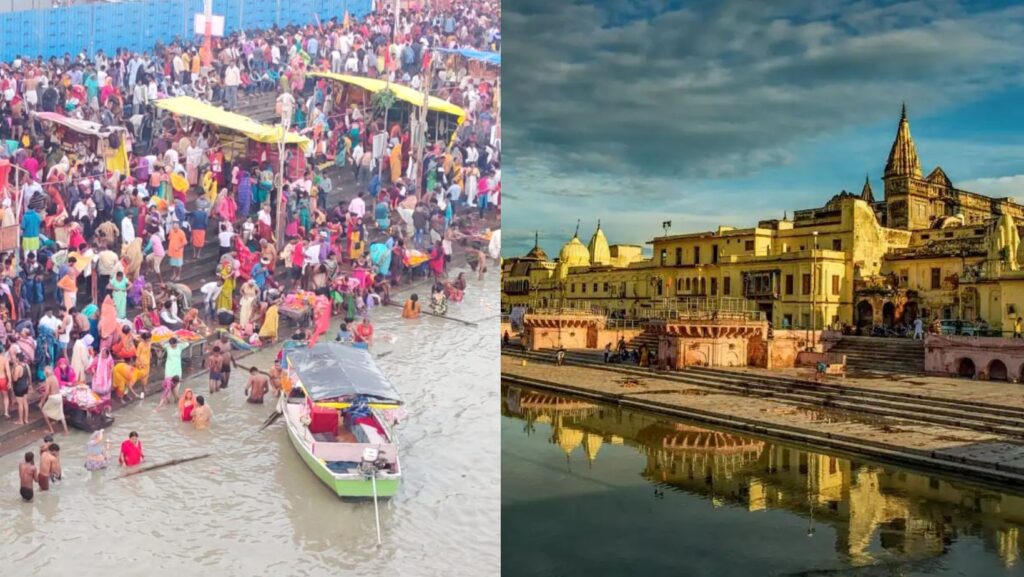In the heartland of India lies Ayodhya, a city steeped in myth, legend, and the essence of Hindu spirituality. One of the most revered traditions in this sacred city is the 14 Kosi Parikrama, a pilgrimage that holds profound significance in the tapestry of Hindu culture. Let’s embark on a historical journey, tracing the roots and evolution of this sacred parikrama in the divine land of Ayodhya.
Ayodhya: The Abode of Divinity
Ayodhya, known as the birthplace of Lord Rama, stands as a testament to the rich cultural and religious heritage of India. Its very name translates to “unconquerable,” reflecting the city’s timeless appeal and spiritual potency. In the heart of Ayodhya lies the revered Ram Janmabhoomi, a site synonymous with the epic Ramayana and the cherished beliefs of millions.
Understanding Kosi Parikrama
Kosi Parikrama is a pilgrimage tradition deeply ingrained in Hinduism, representing a circumambulation around a sacred site. In the context of Ayodhya, the 14 Kosi Parikrama involves a circular journey spanning approximately 48 miles around the holy city. Devotees undertake this sacred walk to seek blessings, purify their souls, and express unwavering devotion to Lord Rama.
The Roots of 14 Kosi Parikrama
The history of the 14 Kosi Parikrama traces back to ancient scriptures and epics. It is believed that the practice gained prominence during the Treta Yuga, the era in which the events of the Ramayana unfolded. Devotees, inspired by the tales of Lord Rama’s life and his association with Ayodhya, initiated the tradition of circumambulating the sacred city.
The Spiritual Significance
The 14 Kosi Parikrama is not merely a physical journey; it is a spiritual odyssey. The number 14 holds profound significance in Hinduism, representing the fourteen years of exile that Lord Rama, accompanied by Sita and Lakshmana, spent in the forests. The parikrama symbolizes the devotee’s commitment to following in the footsteps of the divine, traversing the same path as Lord Rama.
Also read – 14 Kosi Parikrama 2023 Upadte | Ayodhya
Rituals Along the Parikrama Route
As pilgrims undertake the 14 Kosi Parikrama, they engage in various rituals and ceremonies at significant points along the route. These rituals include offering prayers at temples, taking holy dips in sacred rivers, and seeking the blessings of saints and sadhus who inhabit the region. The parikrama becomes a holistic experience, blending physical exertion with spiritual rejuvenation.
Evolution of the Tradition
Over the centuries, the 14 Kosi Parikrama has evolved, adapting to the changing socio-cultural landscape while retaining its spiritual essence. Pilgrims now embark on the journey not only for religious reasons but also to experience a profound sense of peace, introspection, and community bonding. The tradition has become a cultural heritage, passed down through generations, fostering a sense of unity among devotees.
Challenges and Preservation
In contemporary times, the 14 Kosi Parikrama faces challenges associated with urbanization, environmental concerns, and the need for infrastructure development. Initiatives are in progress to harmonize the preservation of traditional sanctity with the practical needs of the contemporary world. Collaborative efforts between organizations and local authorities are aimed at ensuring the accessibility and sustainability of the pilgrimage for generations to come.
Also read – Ayodhya Deepotsav 2023: Ayodhya Make New World Record With Countless Diyas
Also read – 14, Kosi Parikrama 2023, Ayodhya | Date, Marg & Route Guide
The Cultural Tapestry of Ayodhya
Beyond its religious significance, the 14 Kosi Parikrama is a thread in the vibrant cultural tapestry of Ayodhya. The pilgrimage attracts people from diverse backgrounds, fostering an environment of communal harmony and shared devotion. The city comes alive with festivities, processions, and spiritual discourse during the parikrama season, creating an atmosphere that transcends religious boundaries.
Navigating the 14 Kosi Parikrama Route
The 14 Kosi Parikrama route encompasses several important landmarks. Devotees pass through Chakravarti Maharaj Dashrath Mahal, Ramghat, Nandigram, and the revered Saryu River. Each of these sites holds mythological and historical significance, contributing to the holistic experience of the pilgrimage.
Future Prospects and Global Recognition
In recent years, the 14 Kosi Parikrama has gained global recognition, drawing devotees and scholars from various parts of the world. The pilgrimage has become a subject of academic study, with researchers exploring its cultural, historical, and sociological dimensions. This international recognition not only promotes Ayodhya as a center of spiritual heritage but also fosters cultural exchange and understanding.
The Interplay of Faith and Tradition
As we delve into the history of the 14 Kosi Parikrama in Ayodhya, we witness an intricate interplay of faith, tradition, and cultural evolution. The pilgrimage stands as a living testament to the resilience of Hindu beliefs and the enduring connection between devotees and their spiritual roots.
Conclusion: A Pilgrimage Through Time
In conclusion, the 14 Kosi Parikrama in Ayodhya transcends the boundaries of time, weaving together the past, present, and future. It is not merely a journey on foot but a pilgrimage through the corridors of Hindu history and mythology. As devotees tread the sacred path on 23rd November, they carry with them the collective consciousness of centuries, rekindling the flame of devotion that has illuminated Ayodhya for generations.
